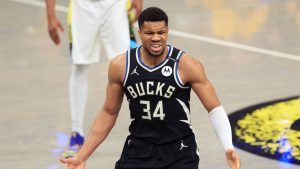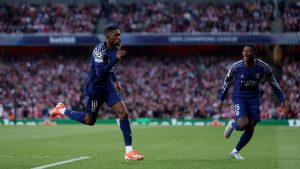
How the Eagles keep winning the draft
The Eagles have built the best roster in the NFL and are reigning Super Bowl champions. They have done it in large part through the draft. No one can beat the draft but the Eagles have set themselves up extremely well during those drafts, which is the best you can do.
After the disaster of the 2020 season the Eagles made several changes to their draft philosophies, some of which had their roots in the 2020 draft, and they have all paid off.
2020 was a needed wake up call for the team. They had just drafted Jalen Reagor instead of Justin Jefferson in the 1st round, which was considered a bad decision at the time and in hindsight was an all time bad decision. In the 3rd they drafted linebacker Davion Taylor, who had barely played football at a position where you can’t succeed in the NFL on athletic skill alone. Day three picks K’Von Wallace, Jack Driscoll, John Hightower, Shaun Bradley, and Quez Watkins were about par for the course. Only Jalen Hurts, a controversial pick at the time, saves 2020 from being one of the worst drafts in team history.
Since then they’ve had four great drafts, and just had what is considered another strong one. Here’s how they did it.
They started drafting top players from top programs
Since the 2016 offseason, when Howie Roseman returned to power, six programs have won the college football title game, and three other programs made it to the final. The trio of Alabama, Georgia, and Clemson dominated the beginning of that era, with at least one of them appearing in a title game in eight straight–winning seven of those eight–and five times a combination of those three teams faced each other.
Prior to 2021, the Eagles pretty much actively avoided players from these programs.
Before drafting DeVonta Smith and Landon Dickerson in 2021, the only player the Eagles had ever drafted from Nick Saban’s Alabama teams was Jalen Hurts, who spent his final year there as a backup and his final season in college at Oklahoma. Until they drafted Jordan Davis and Nakobe Dean in 2022, they had not drafted anyone from Kirby Smart’s Georgia teams. K’Von Wallace, a 4th rounder, was the only Eagles draft pick from the Dabo Swinney Clemson teams that had a six year run of top five finishes and appeared in four title games, winning two of them.
From 2021 on, 6 of the 15 Eagles draft picks from rounds 1-3 played their final college game in the title game: DeVonta Smith, Landon Dickerson, Jordan Davis, Nakobe Dean, Jalen Carter, and Nolan Smith. An additional four day three draft picks were also on college football title game teams: JaCoby Stevens, Kelee Ringo, Trevor Keegan, and Myles Hinton. And three more played in the college football playoffs: Andrew Mukuba, Smael Mondon, and Cameron Williams.
With college schemes closer to the NFL than they have ever been before, and talent concentrated on a handful of college teams more than ever before, the best college teams are closer to being a “33rd” team than ever before. It is no coincidence that building a core of players from those programs has seen the Eagles win a Super Bowl and nearly win another.
They stopped bringing in bad athletes
This actually started in 2020, but not at the top of the draft.
Relative Athletic Score, or RAS, is not a perfect measurement of a player’s athletic ability and potential, as it can be cheated to gain a high score by not participating in some events. For example Shemar Stewart scored a 10.00 this year, but he did neither the shuttle nor the 3 cone, which would have lowered his perfect score.
But it is a reasonable measure to put players into buckets of good, average, and poor athletes relative to their position. It doesn’t really matter if one player scored a 9.27 and another as an 8.79, but it does make a difference if one of them scored a 6.36.
From 2016 to 2019, the Eagles drafted 24 players with an RAS grade, only 9 of them scored at least an 8.00 (out of 10). Just as many scored below a 7.00.
From 2021 on, the Eagles have drafted 32 players with an RAS grade, and 24 of them had a grade of at least 8.00, and only 4 had a grade of below 7.00.
Even more indicative of this shift have been the undrafted free agents. From 2016-2019, the Eagles brought in 61 UDFAs with an RAS score. Just 11 of them, or 18%, had an RAS of 8.00 or better, and just 18, or 30%, were 7.00 or better.
From 2020 on, they have brought in 61 RAS UDFAs, and 39, or 64%, had an RAS of 8.00 or better, and 48, or 79%, were 7.00 or better.
Being bigger, faster, and more agile guarantees nothing in the NFL, but it is certainly better than being smaller, slower, and stiffer.
They shifted UDFA focus to bigger programs and better recruits
This also started in 2020.
From 2016-19, just 52% of Eagles UDFAs were from Power 5 conferences, and 75% were from FBS programs. From 2020 on, 61% were from Power 4/5 conferences, and 85% were from FBS programs. From 2016-19, they brought in 16 players from FCS or NAIA programs. None of them amounted to anything. Since then, they’ve brought in just one.
Certainly part of that is the era of the transfer portal and NIL pulling talent up into the power conferences, but the Eagles shift is more than that. The average recruiting star grade of UDFAs from 2016-20 was 2.30, from 2021 on was 2.83.
They followed the wisdom of the crowds
If someone says the draft is luck, or a crapshoot, or random… they are wrong. Certainly there is an element of luck involved, but the league has gotten pretty good at determining who should be early draft picks, and who should not. If the draft was truly random, talent would be evenly distributed and late round stars like Puca Nacua and Brock Purdy would be the norm, not the exception.
After the overthinking-it mistake of Jalen Reagor, not a consensus top 40 player, over Justin Jefferson, a top 20 prospect, (and Davion Taylor, barely a top 150 prospect at 103) the Eagles have drafted in the top half of the draft players that were if not the “best player available” then among the best players available. In 2021 at 10 the Eagles drafted DeVonta Smith, a consensus top 10 player; at 37 Landon Dickerson, a consensus top 40 selection. In 2022 Jordan Davis, a consensus top 15 player, was taken 13th; Nakobe Dean was a consensus top 25 player who was taken 84th. Jalen Carter was a top 3 player taken 9th; Nolan Smith a top 20 player taken 30th; additionally Moro Ojomo was a top 150 player taken 249. In 2024 Quinyon Mitchell was a top 15 player taken at 22; Cooper DeJean was a top 25 player taken at 40. This year saw Jihaad Campbell, a consensus top 15 pick, taken at 31; and Andrew Mukaba and Ty Robinson were taken around their consensus rank.
Not coincidentally or unsurprisingly, they have gotten great post-draft grades for these selections.
Football is a complex game with no guarantees. For years the Eagles have been called one of the leading analytical teams, but they didn’t always act like it. There is a great phrase by sabermetrician Phil Birnbaum: “One of the things that analytics can do very well is filter out the really stupid decisions.” The Eagles haven’t been perfect, but over the past five years they have finally adhered to a similar approach, and the results have been amazing.











